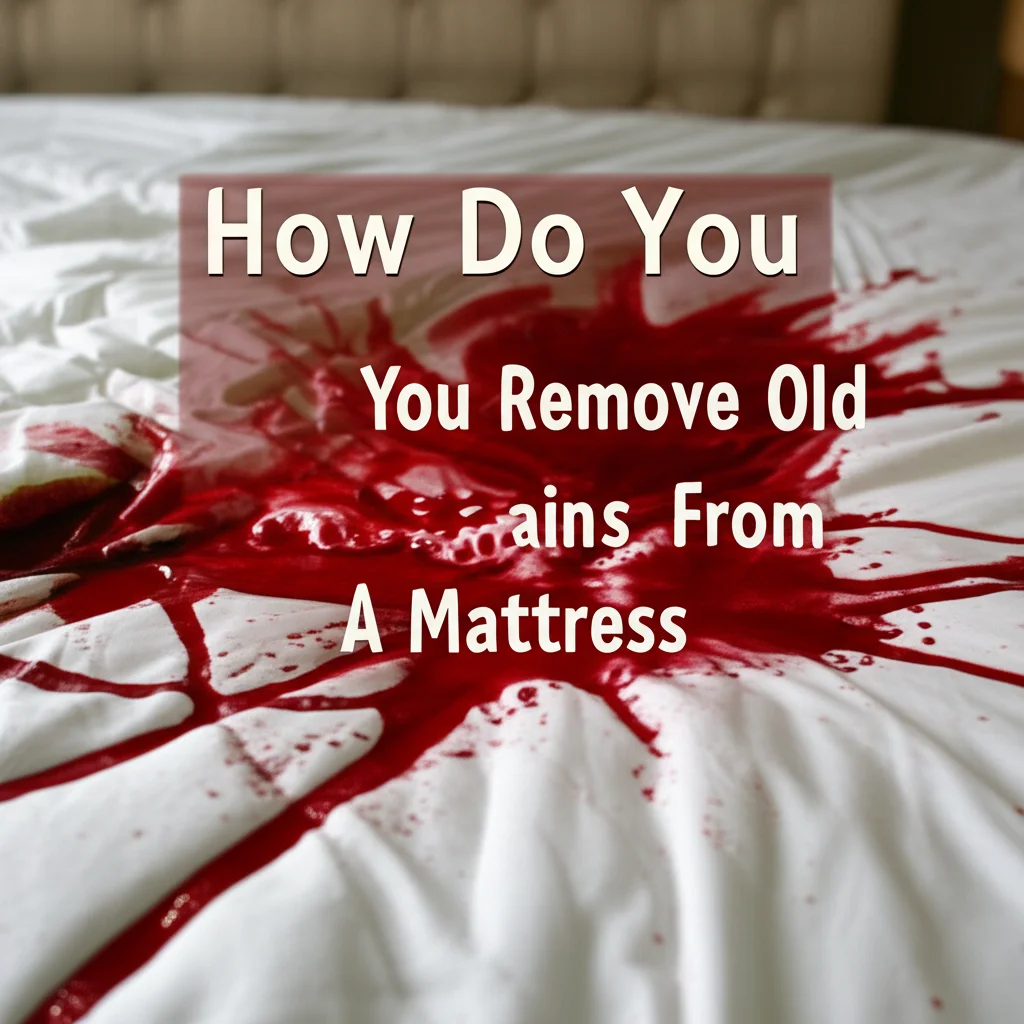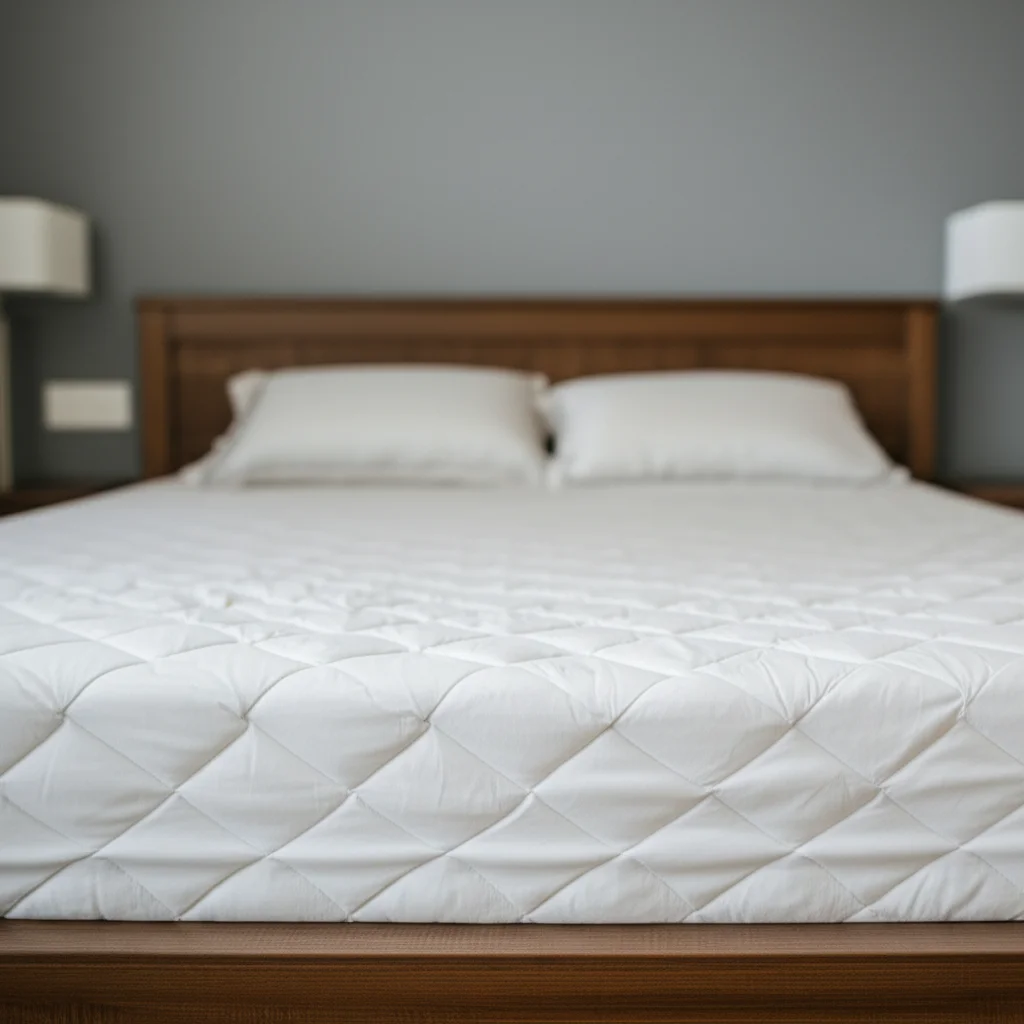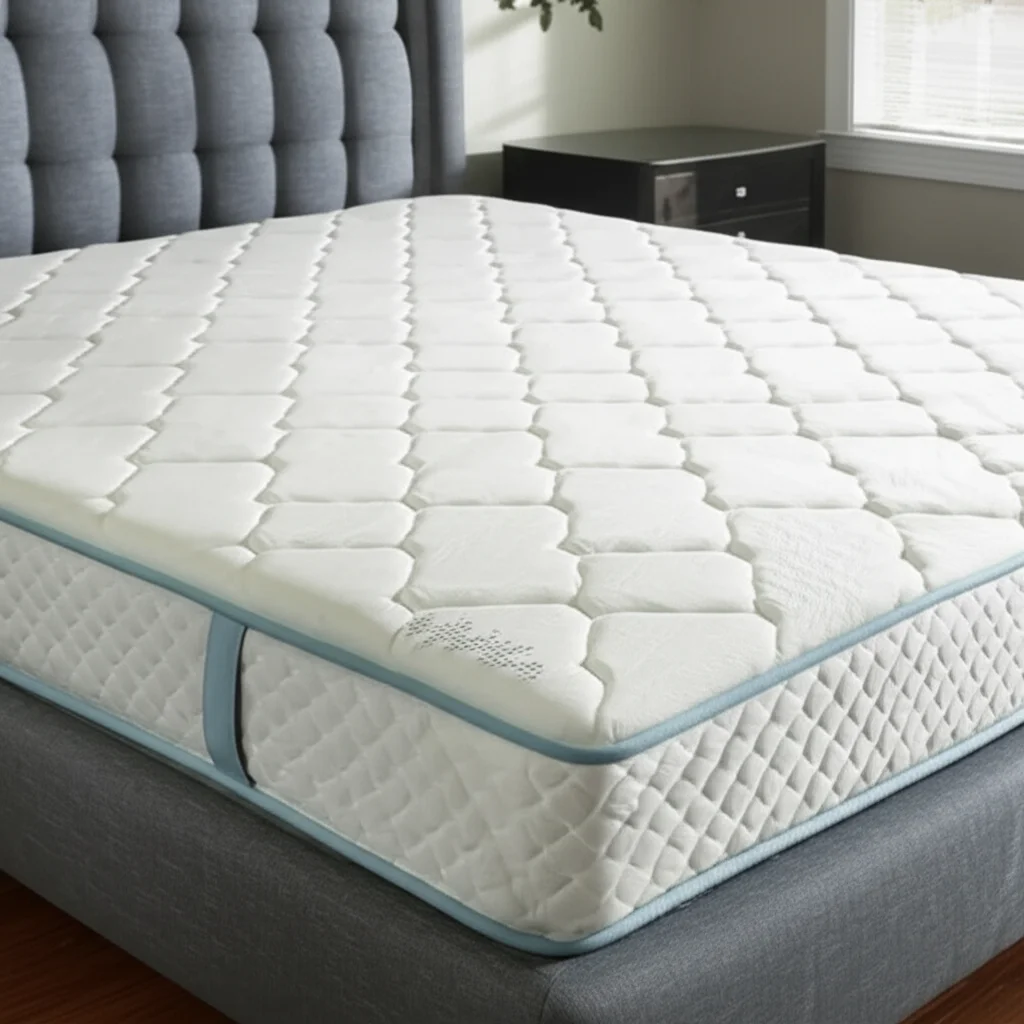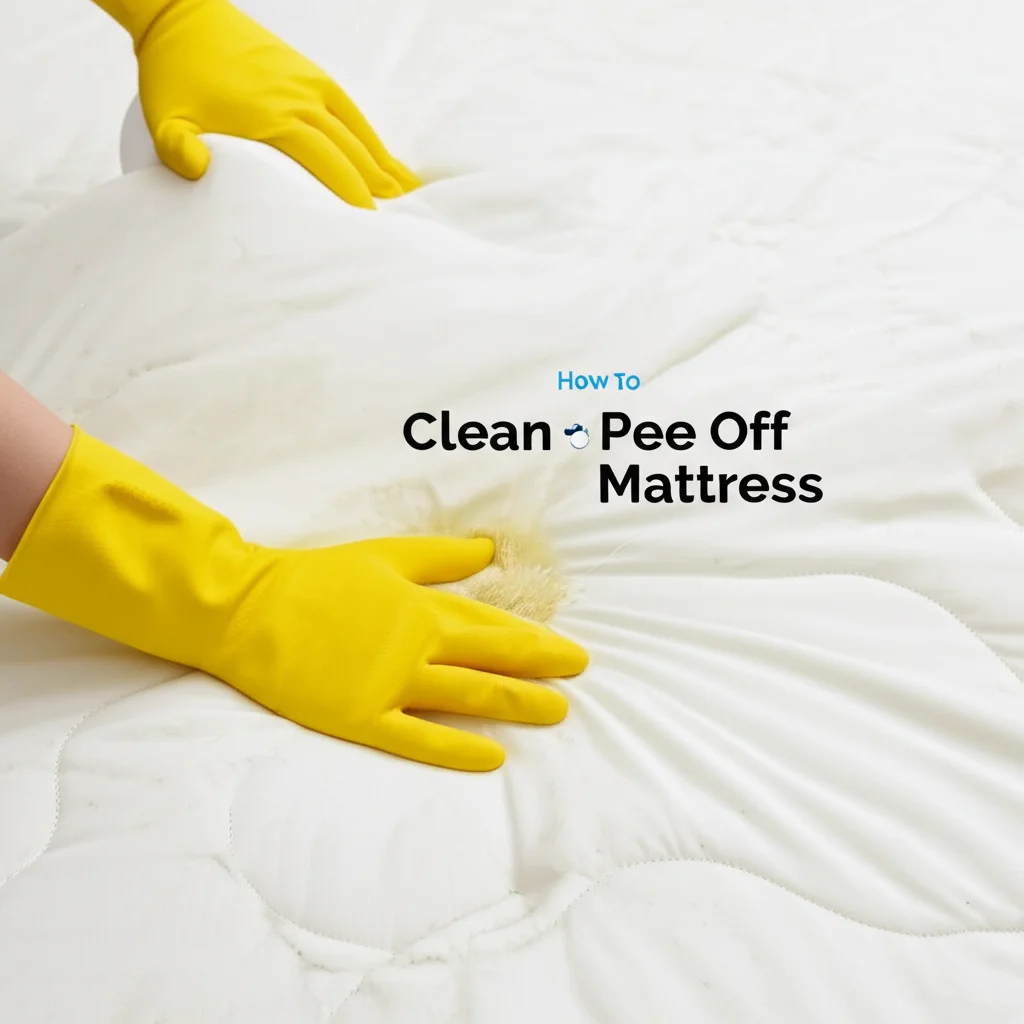· Todd Martin · Home Cleaning · 12 min read
How Do You Remove Old Blood Stains From A Mattress

Revive Your Mattress: Remove Old Blood Stains Effectively
Discovering an old blood stain on your mattress feels disheartening. You might think the stain is permanent. Many people face this common challenge. Old blood stains can appear impossible to remove. However, I assure you, it is possible to clean old blood stains from a mattress. This guide provides proven methods. We will walk through preparing your space. We will explore effective DIY solutions. We will also discuss the power of enzyme cleaners. Finally, we will cover how to dry your mattress properly.
Takeaway:
- Old blood stains respond well to specific cleaning agents and cold water.
- Act quickly and use the right tools for successful stain removal.
- Always test cleaning products on an unseen area first to avoid damage.
To remove old blood stains from a mattress, first blot the area with cold water. Apply a paste of baking soda and hydrogen peroxide, or use an enzyme cleaner. Allow the solution to work, then blot and rinse with cold water. Repeat as needed, and ensure the mattress dries completely to prevent mold growth.
Understanding Old Blood Stains and Why They Stick
Old blood stains are notoriously difficult to remove from fabrics. This is especially true for a mattress. The challenge comes from the hemoglobin in blood. Hemoglobin contains iron. When blood dries, this iron oxidizes. It binds tightly to the fabric fibers. This process makes the stain “set” into the material. It also deepens its color.
Using hot water on blood stains makes them worse. Hot water cooks the proteins in the blood. This causes them to coagulate. Once coagulated, the proteins bond even more firmly to the fibers. This process makes the stain almost impossible to lift. Always use cold water for blood stains. Cold water helps keep the proteins from setting. It allows them to remain more soluble. This makes them easier to remove.
Removing old blood requires patience. You cannot expect a perfect result on the first try. The stain has had time to bond with the mattress fibers. Repeated applications of cleaning solutions are often necessary. Each application works to break down the bond a little more. This gradual process helps lift the stain effectively.
Essential Tools and Preparations Before You Begin
Before you start, gather your supplies. Having everything ready makes the cleaning process smoother. You will need cold water, clean white cloths, or paper towels. A spray bottle helps apply solutions evenly. Wear protective gloves to shield your hands. A fan can speed up drying.
Protecting your mattress during cleaning is very important. Avoid over-wetting the mattress. Excess moisture can lead to mold and mildew growth. Mold creates a new problem that is harder to fix. Use a spray bottle for controlled application. Dampen cloths, do not soak them. This limits the amount of liquid that soaks into the mattress core.
Always test any cleaning solution on a small, hidden area of the mattress first. This could be a corner or the underside. Some solutions, like hydrogen peroxide, can bleach fabrics. This test ensures the cleaner does not damage your mattress material. It gives you confidence before treating the main stain.
Good ventilation is important throughout the cleaning process. Open windows or use a fan. This helps odors escape. It also aids in drying the mattress more quickly. Proper airflow prevents moisture from lingering. This reduces the risk of mold.
Powerful DIY Solutions for Tough Blood Stains
You can often tackle old blood stains with common household items. These DIY methods are effective and budget-friendly. They break down the stain at a molecular level. Always remember to blot, not rub, the stain. Rubbing spreads the stain and pushes it deeper into the mattress fibers.
Hydrogen Peroxide Method
Hydrogen peroxide is a strong oxidant. It releases oxygen bubbles when it touches organic matter. This action helps lift and break down blood proteins. It is very effective for old blood stains. You can buy hydrogen peroxide at any pharmacy.
First, pour a small amount of 3% hydrogen peroxide directly onto the stain. Do not drench the mattress. You should see it fizz. Let it sit for a few minutes. Then, blot the area with a clean, cold, damp cloth. Repeat this process a few times. Make sure to use a fresh part of the cloth each time. Hydrogen peroxide can bleach some mattress fabrics. Always test it on an inconspicuous area first.
Baking Soda and Cold Water Paste
Baking soda is a mild abrasive and a natural deodorizer. When mixed with cold water, it forms a paste. This paste helps lift stains from fibers. It also helps neutralize any lingering smells. This method is gentle on most mattress types.
Combine two parts baking soda with one part cold water. Mix until you form a thick paste. Apply this paste directly onto the old blood stain. Cover the entire stained area. Let the paste dry completely on the mattress. This usually takes several hours. Once dry, scrape off the dried paste. Then, vacuum the remaining residue. This method works well for drawing out the stain. For more tips on general mattress stain removal, you can learn how to clean stains off mattress with baking soda.
Salt and Dish Soap
Salt and dish soap work together to break down the blood. Salt helps absorb the liquid from the stain. Dish soap acts as a degreaser and helps dissolve organic matter. This combination is particularly good for older stains that have dried and crusted.
Mix one tablespoon of salt, one tablespoon of liquid dish soap, and two tablespoons of cold water. Stir them to create a thick mixture. Apply this solution generously over the blood stain. Let it sit for about 10-15 minutes. After soaking, use a clean, cold, damp cloth to blot the stain. Work from the outside of the stain towards the center. This stops the stain from spreading. Repeat until the stain fades.
Enzyme Cleaners: Your Secret Weapon for Biological Stains
Enzyme cleaners are powerful tools for removing old blood stains. These cleaners contain special enzymes. These enzymes are proteins themselves. They break down other complex organic molecules. These include the proteins, fats, and carbohydrates found in blood. This makes the stain easier to remove.
Enzyme cleaners are highly effective because they target the specific components of blood. They essentially digest the stain away. This is different from general cleaners that just lift dirt. For an old blood stain, the enzymes break down the set proteins. This action separates them from the mattress fibers. This leads to complete removal. Many pet stain removers are enzyme-based. They work well for blood too.
To use an enzyme cleaner, first read the product’s instructions. Each brand may have slightly different directions. Generally, you apply the cleaner directly to the old blood stain. You saturate the area lightly. Then, you let the cleaner sit for a recommended time. This time can vary from 15 minutes to several hours. The longer dwell time allows the enzymes to work fully.
After the specified time, blot the area with a clean, cold cloth. Do not rub the stain. Continue blotting until the stain lifts. You may need to reapply the cleaner for stubborn spots. Always ensure proper ventilation when using these products. For more comprehensive approaches to cleaning various mattress stains, explore how to clean mattress stains.
Advanced Strategies for Persistent Stains
Sometimes, even with DIY methods and enzyme cleaners, a faint shadow of the old blood stain remains. For these truly persistent marks, you need more advanced strategies. These methods involve stronger agents or professional help. Use them with great care. Always prioritize your safety and the mattress material.
Meat Tenderizer Trick
Meat tenderizer might sound unusual for cleaning. However, it contains enzymes, usually papain or bromelain. These enzymes are excellent at breaking down proteins. Since blood is rich in proteins, meat tenderizer can be very effective. This method is a natural way to fight tough stains.
Mix one tablespoon of unseasoned meat tenderizer powder with two teaspoons of cold water. Form a thin paste. Apply this paste directly onto the remaining blood stain. Let it sit for about 15-30 minutes. The enzymes need time to work on the blood proteins. After waiting, gently scrape off the paste. Then, blot the area thoroughly with a clean, cold, damp cloth. Repeat as needed for the best results.
Ammonia Solution (Use with Caution!)
Ammonia is a powerful cleaner for very old and stubborn blood stains. However, it requires extreme caution. Ammonia fumes are strong. Never mix ammonia with bleach. This creates dangerous chlorine gas. Ensure your room is very well-ventilated before using ammonia. Open all windows and use fans.
Dilute one tablespoon of clear ammonia in one cup of cold water. Pour this solution into a spray bottle. Lightly mist the old blood stain on the mattress. Do not saturate the area. Let it sit for 5-10 minutes. Then, blot the stain with a clean, cold, damp cloth. Rinse the cloth often. Repeat the blotting process until the stain disappears. Always wear gloves during this process. After cleaning, let the mattress air out completely.
Professional Mattress Cleaners
If the old blood stain persists after trying all these methods, consider professional help. Professional mattress cleaners have specialized equipment and stronger solutions. They use methods like hot water extraction. This process sprays hot water and cleaning solution deep into the mattress. Then, a powerful vacuum immediately extracts it. This method removes stains effectively without over-wetting.
Professional services are a good investment for valuable mattresses. They can often remove stains that seem impossible. They also offer a deeper clean. This improves the overall hygiene of your mattress. For a full refresh, consider a deep clean for your mattress. Professionals ensure your mattress is clean and dry.
Drying Your Mattress and Preventing Future Stains
Proper drying is the final and most crucial step in removing old blood stains. If you do not dry your mattress completely, mold and mildew will grow. Mold thrives in damp, dark environments. This can ruin your mattress and cause health issues. Always dedicate enough time for the mattress to dry.
After cleaning, gently blot the treated area with a dry towel. This removes excess moisture. Then, allow the mattress to air dry completely. Open windows in the room. Use a fan to circulate air. You can even use a hairdryer on a cool setting. Hold it several inches away from the mattress surface. Avoid using heat. Heat can set any remaining stain. It can also damage the mattress material.
Sunlight is a natural sanitizer and drying agent. If possible, move your mattress outdoors on a sunny, dry day. Direct sunlight helps kill bacteria and dry out moisture. Position the mattress upright to expose both sides. Ensure it is protected from dirt or pollen. This also helps with any lingering odors.
Preventing future stains is easier than removing old ones. A mattress protector is your best defense. These covers create a barrier. They protect your mattress from spills, sweat, and accidents. They are usually washable. You can simply remove and clean the protector if a spill happens. This keeps your mattress clean for longer. Knowing how to spot clean a mattress is also a valuable skill. It allows you to address small spills immediately. Consider investing in a good quality, waterproof mattress protector. It saves you time and effort in the long run. Learn how to clean a mattress protector for ongoing hygiene.
FAQ Section
Can hot water remove old blood stains?
No, hot water makes blood stains set more. It cooks the proteins in the blood. This causes them to bond strongly with fabric fibers. Always use cold water when treating blood stains. Cold water keeps the proteins from setting. This makes them easier to lift and remove.
Is hydrogen peroxide safe for all mattresses?
Hydrogen peroxide is effective but can bleach some colored fabrics. It is generally safe for white or light-colored mattresses. Always perform a patch test first. Apply a small amount to an inconspicuous area. Wait a few minutes to check for any color change before proceeding.
How long does it take to remove an old blood stain?
Removing an old blood stain can take time and patience. It rarely comes out on the first try. Expect to apply solutions multiple times. Each application may need time to soak. The entire process could take a few hours or even a full day. This depends on the stain’s age and size.
Can I use bleach on blood stains?
I do not recommend using bleach on blood stains. Bleach can permanently damage mattress fabric. It may also discolor or weaken the material. Bleach fumes are strong. Mixing it with other cleaners, like ammonia, creates toxic gas. Stick to safer, proven methods.
What if the stain is still there after trying these methods?
If the stain remains after trying these methods, do not despair. The stain might be very old or deeply embedded. You can try repeating your preferred method. Use slightly stronger concentrations if the fabric allows. Consider hiring a professional mattress cleaner. They have advanced equipment. They can often remove the most stubborn stains.
Conclusion
Removing old blood stains from a mattress can seem like a daunting task. However, with the right approach and a bit of patience, you can achieve remarkable results. We have covered several effective strategies. These include using simple DIY solutions like hydrogen peroxide and baking soda. We also discussed powerful enzyme cleaners. Remember, the key is persistent effort. Do not get discouraged if the stain does not disappear immediately.
Always prioritize proper drying. This step prevents mold and mildew. It ensures your mattress remains clean and healthy. Protect your mattress from future spills with a good mattress protector. This simple item saves you from future cleaning headaches. You now possess the knowledge to confidently remove old blood stains from a mattress. Take action and restore your sleep sanctuary today. Your mattress will thank you for it.





